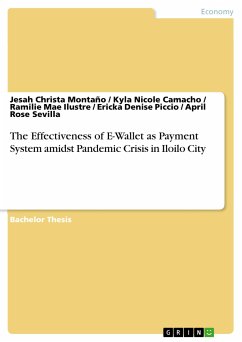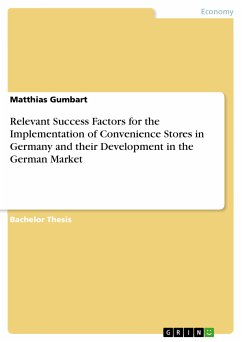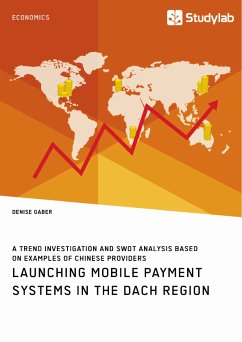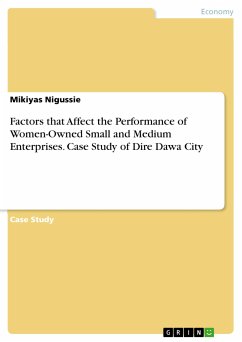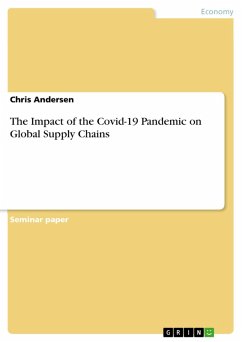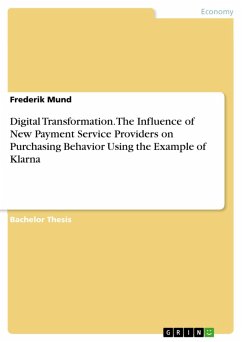Bachelor Thesis from the year 2022 in the subject Business economics - Trade and Distribution, grade: 1.3, , course: Bachelor of Science in Business Administration Major in Financial Management, language: English, abstract: During the outbreak of the Covid-19 virus, the economy of Iloilo City experienced a setback wherein the Ilonggo e-wallet users utilized the e-wallet as payment system since its services showed convenience in continuing their financial transactions at the comfort of their home which resulted in higher demands to its effectiveness. In conformity, this study was conducted to determine the effectiveness of e-wallet as payment system among Ilonggo E-wallet users during the COVID-19 pandemic. This study is established on two theories namely, Unified Theory of Acceptance and Use of Technology (UTAUT) and the Theory of Effectiveness Measurement, wherein five influential factors were recognized i.e. Convenience, Security, Reliability, Responsiveness, and Accessibility. Qualitative Research Design was implemented, and Purposive Sampling Technique was used to choose the 300 participants and gather data by distributing survey questionnaires through online platforms. The data was analyzed using statistical tools namely the mean, frequency, percentage, standard deviation, Mann Whitney U Test, and the Kruskal Wallis H Test.
Dieser Download kann aus rechtlichen Gründen nur mit Rechnungsadresse in A, B, BG, CY, CZ, D, DK, EW, E, FIN, F, GR, HR, H, IRL, I, LT, L, LR, M, NL, PL, P, R, S, SLO, SK ausgeliefert werden.

